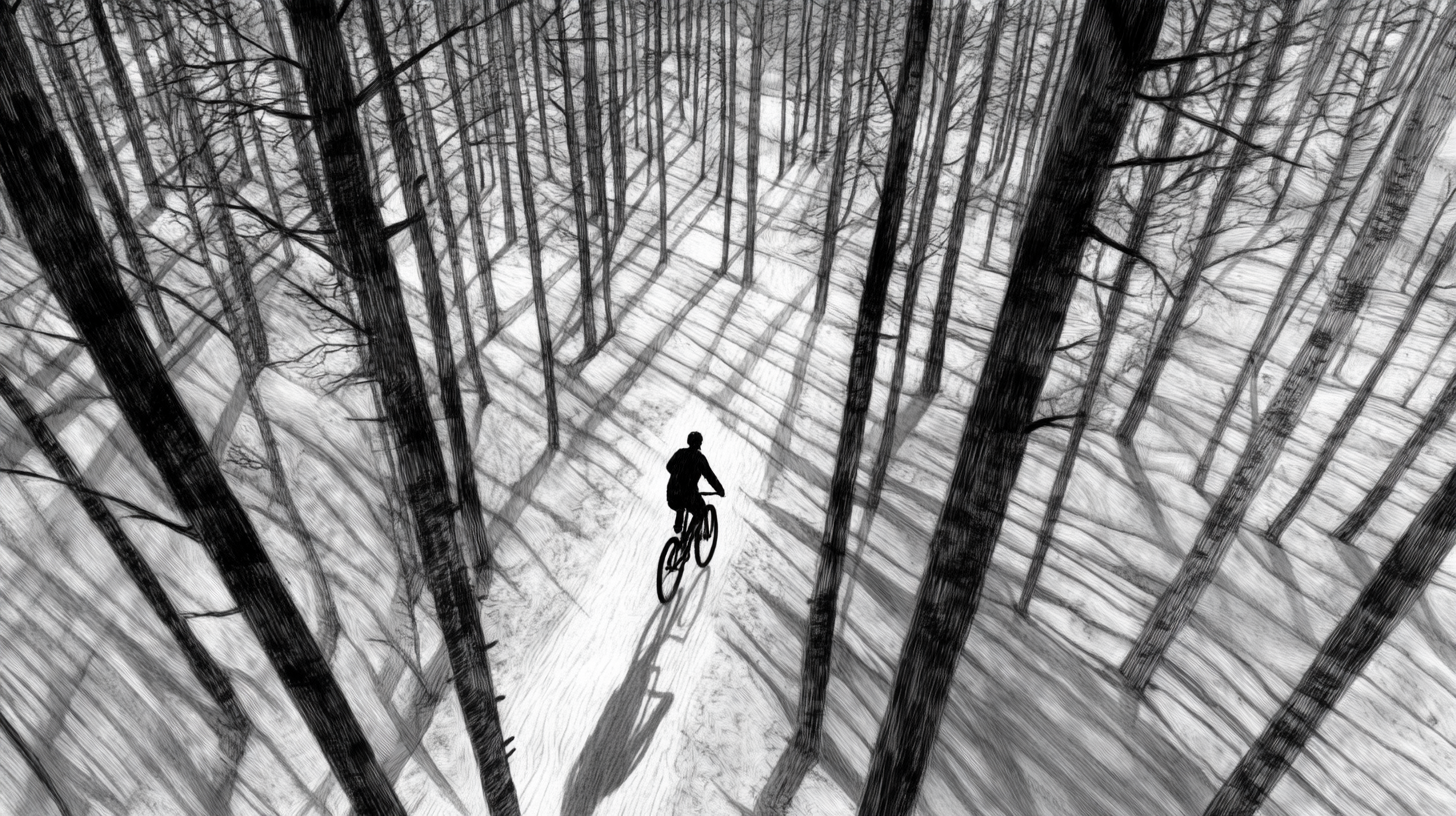Note: This post is adapted from the original article published on February 23, 2021, by Fitch Proctor on the Blackstone Valley NEMBA blog.

Riding in the Snow is Awesome
Imagine it’s 27 degrees outside. You’ve had your morning coffee and are now on your fat bike, gliding over miles of smooth, frozen, snow-covered trails at West Hill Dam. The woods are serene, save for your breath and the crunch of snow beneath your tires. Perhaps you’ve ventured to Vietnam, navigating ice-covered rocks and bridges, or you’re cruising through Douglas, appreciating the absence of the usual rocky terrain. Snow biking is truly an exhilarating experience.
These pristine winter trails don’t appear by chance. They’re the result of dedicated volunteers, favorable weather, cooperative landowners, and effective communication promoting best practices.
Trail Preparation
After a snowfall, numerous snowshoers, cross-country skiers, and snowmobiles lay the groundwork for our winter trails. At West Hill Dam, BVNEMBA volunteers deploy “Crank,” our SnowDog—a hybrid between a tractor and a snowmobile. Volunteers guide Crank to pack down and groom the snow, creating the ideal surface for riding. You can find photos and videos of this grooming process on the BVNEMBA Facebook page.
When to Ride
Snow trails are surprisingly delicate. It’s essential to ride only when the snow is frozen. Warmer daytime temperatures can soften the top layer, making it susceptible to ruts and footprints. Riding during these times can damage the trails. Once the temperature drops and the layer refreezes, the trails become firm and ready for use. Always check with local Facebook groups or experienced riders to confirm trail conditions before heading out.
Equipment Matters
For optimal snow riding, fat bikes with wide tires and low pressure are recommended to prevent sinking into the snow. Standard mountain bike tires often lack the necessary weight distribution. Additionally, using studded tires can enhance traction, especially on icy sections.
Trail Etiquette
- Ride Early: Morning rides are ideal when temperatures are lower, and trails are firmly frozen.
- Use Appropriate Equipment: Fat bikes are best suited for winter conditions. If you don’t have one, consider snowshoeing instead, which also helps pack the trails for future rides.
- Be Considerate: Remember, these trails are shared. When encountering walkers or other users, be friendly and courteous. Positive interactions foster a welcoming trail community.
Snow biking offers a unique and thrilling way to experience the trails during winter. By following best practices and respecting trail etiquette, we can ensure enjoyable rides for everyone.
